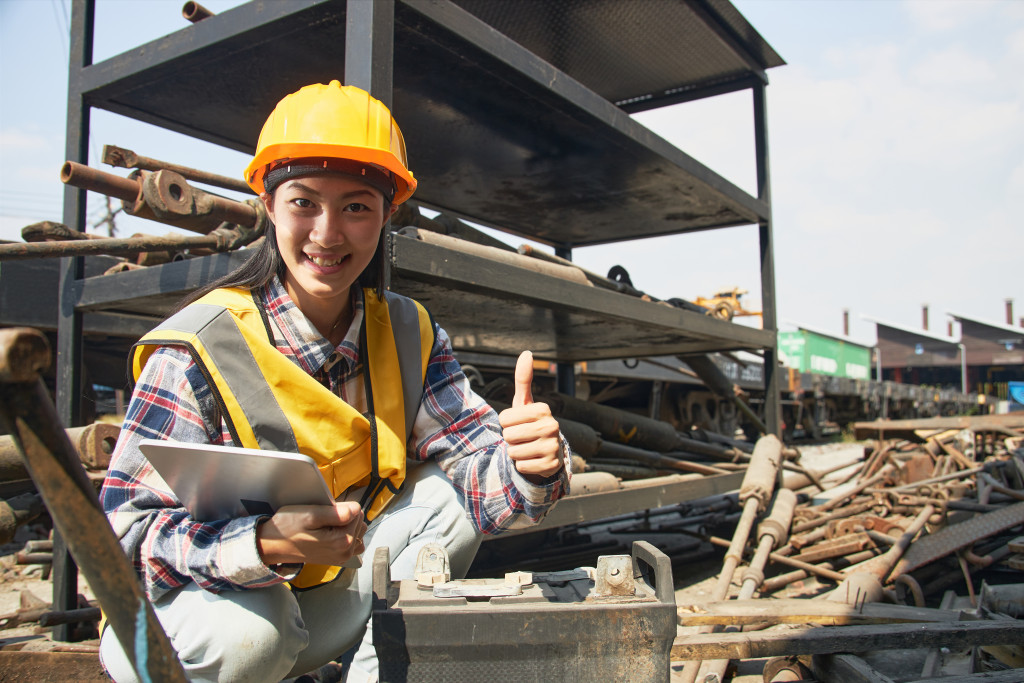- Creating a safety plan outlining duties and establishing rules is the first step in ensuring safety at a construction site.
- Having reliable guidelines and providing employees with adequate training is essential for successful safety protocols.
- Providing employees with the necessary tools and resources can minimize risks.
- Developing a safety culture by reinforcing protocols and investing in employees’ well-being is key to keeping everyone safe.
In 2020, around 20 percent of all fatalities in the workplace happened within the construction industry. An even more staggering figure is that nearly one-third of these deaths were due to falls resulting from slips and trips. Many of these deaths were caused by falling to a lower level – with 46 percent being fatal falls alone!
Construction is one of the most hazardous industries in the United States. That’s why it is essential for business owners and entrepreneurs to ensure that their construction sites are safe and secure. Here’s how you can accomplish this goal.
Creating a Safety Plan
The first step in ensuring safety at a construction site is creating a safety plan that outlines the duties of everyone on the site and establishes rules for working safely. The safety plan should include fall protection guidelines, lockout policies, hazard communication protocols, and emergency action plans.
Outline Proper Procedures
It should also outline proper procedures for any specific tasks that need to be done on-site and other general safety precautions. Additionally, the safety plan should be reviewed and updated regularly to ensure everyone follows the most up-to-date rules and regulations.

Consider All Risks
When creating a safety plan, it’s essential to consider all potential hazards on the worksite. This could include everything from slips and falls to hazardous materials or equipment. You should also consider the type of work on-site and any unique challenges or risks. It’s also important to provide employees with a clear understanding of their roles and responsibilities regarding safety and the consequences of not adhering to the safety plan.
Refer to Guidelines
Additionally, you should refer to guidelines when creating a safety plan to make sure that it complies with all relevant regulations. For instance, you can refer to a reliable crane inspection certification requirement when choosing the lifting equipment to use at the site. The certification should take into account the load to carry and the load angle. If the certification shows that rigging equipment is strong enough, you can use it to carry the load.
Providing Training
Once the safety plan has been created, it’s essential to ensure that all employees understand it and receive adequate training on how to work safely on the job site. This includes training in hazard recognition, personal protective equipment use, working at heights, and safe lifting techniques.
Refresher Course
It’s also vital to provide refresher courses periodically to ensure that employees remain up-to-date with safety protocols. Communication is key to successful safety training, so it should be done in person and reinforced with written materials if necessary. By providing ongoing training, employers can help ensure that everyone on the job site understands the safety plan and follows its protocols. Additionally, having well-trained employees helps protect the company and its workers from liability in case of an accident or injury.
Safety Tools and Equipment
Finally, providing employees with the tools and resources is crucial to work safely on the job site. This includes hard hats, goggles, respirators, safety harnesses, and other personal protective equipment required for specific tasks or situations. Providing these items ensures that all workers have access to the safety equipment to work safely and reduce the risk of injury or illness. It also shows employees that the company is invested in their safety and well-being, which can help create a positive work environment.
Implementing Safety Measures
It’s also crucial that business owners take steps to physically improve safety on their worksites. This includes providing employees access to proper personal protective equipment and posting warning signs in hazardous areas. The business should also ensure good housekeeping practices and implement lockout procedures for machinery or electrical systems that need servicing or repairs.

Site Inspection
Additionally, employers should regularly inspect their worksites for potential hazards and take measures to minimize risks wherever possible. Finally, employers should ensure that all employees are properly trained on safety protocols and procedures. Regular safety meetings and drills should also be held to remind employees of their responsibility to maintain a safe working environment. By taking these steps, employers can create a culture of safety that will help protect both employees and the company itself.
Safety should always be a top priority when running a construction business or managing a construction project—especially considering how dangerous these sites can be. Following the steps enumerated in the article, business owners can help create safer environments on their construction sites and reduce the risk of accidents occurring while work is underway. With proper planning and dedication to workplace safety standards, employers can help ensure their workers’ and businesses’ well-being!
